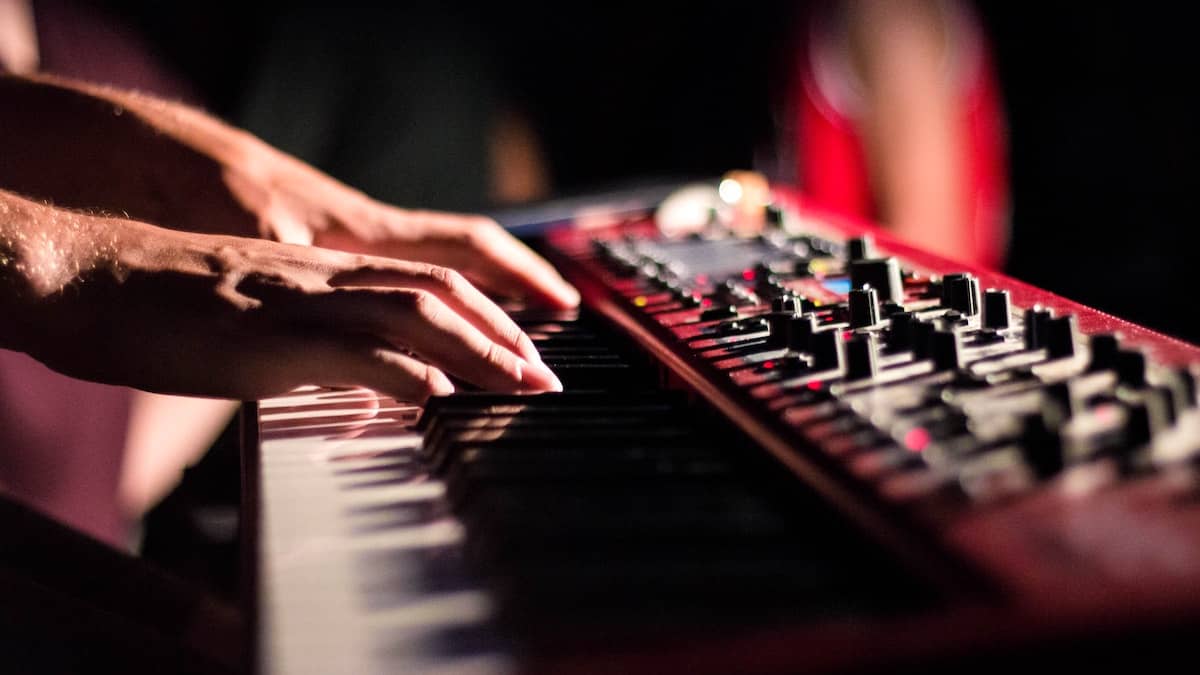Columns
Composer’s Forum: What Makes a Good Song Idea?

Where do song ideas come from, where do we take them, and where do they take us?
What makes a good song idea? How do you know what’s worth pursuing? If something comes easily—appearing, as it were, out of the blue—can it possibly have intrinsic value? What can, in fact—beyond your current state of mind—qualify one musical idea over another?
Playing the Field
There are days when almost everything we play, noodle, or imagine seems to qualify. That seems unproductive, so we might apply some filters to narrow what we think we should be working on. The best criteria might be choosing the one(s) that we simply can’t stop playing. That’s not a bad idea, but—at least in my case—there are too many of those to narrow the field very much. (I also tend to like most movies.)
You might try to select only ideas that are truly unique and non-derivative (if there can be such a thing). One problem with that is its inherent mentality: by concentrating on linear assessments and ascribing value to a basically non-musical attribute—singularity—we are potentially foreclosing an emotional attachment to the idea. If we are not absolutely in love with the core idea, there’s no hope we will hang out to develop it.
All Play and No Work?
The truth is that we don’t need to put that much pressure on these initial ideas. Remember, we will be playingwith them for some time, molding them. During that time, we can steer them this way and that way, add or remove this or that. Still not unique enough? Then we can season the ideas, add a surprise, drop a beat, and do it differently as it comes around.
Or it could be that the current idea is still just a series of notes in a step sequencer that might leave anyone cold. Enable or turn up the keyboard velocity to the amp or filter and listen to the results. If nothing changes, then get in there and edit each step’s velocity to provide accents and groove to the sequence. All of a sudden, it’s cool.
Yes, it is playing, and yet at the same time, it is doing the work. Sound familiar? That’s right, we are now having a relationship with this song idea. One that will last all the way until the agonies over how it ends have played out. One that will last long after the music is produced and has walked out the door to live its own life. Of course, we’ll hear it from time to time, and old doubts will invariably surface, as well as good memories about all the able problem-solving and cool discoveries that are the stuff of songwriting.
Let’s Dance
Nile Rodgers tells a fun story about writing the song “Let’s Dance” with David Bowie. Bowie walks in the room strumming a 12-string, playing a couple chords (I–IV) back and forth with a fairly simple pop/rock rhythm. He says it could be a dance hit, and Nile is wondering how that could possibly be. Nonetheless, he says he will work on an arrangement and proceeds to describe the way he develops the idea.
It’s remarkable to follow along as he expands the harmonic possibilities by using jazz extensions and voice-leading possibilities. He voyages out in ways that inspire his personal preferences (and Bowie’s own jazz proclivities), using transposition and inversions, and eventually distills these ideas into a very natural-sounding chord progression.
The core idea was bone-simple, but the harmonic workings out took some playing, some adjustments, some considerations. In a sense, Nile Rodgers refashioned the core idea into a vibe, a fashion all its own. The whole sound of the production is quite an amazing sum of few parts: sparse Strat upstrokes with generous synced stereo delays, a brilliant rhythm section replete with woodblocks, the horns, and of course, Bowie himself, presenting yet another incredible vocal character in a series of such creations.
This story takes my world by storm—that a minimal generic idea can transform so completely (casual folk strummings that become righteous new dance music). It could be that their professional relationship helped Rodgers feel commissioned to simply make it happen. If so, then perhaps we should establish some distance from our own ideas and deliver similarly fresh results…to ourselves.
I know I have a list of song ideas that are somewhat genre-specific and for which I cannot imagine other outcomes. Perhaps I can deliver them to my own professional avatar and surprise myself.
Take a Look Around
So, what makes a good song idea, a good creative spark? Certainly, a vibe that doesn’t leave us alone—something that deserves respect and is worth days if not weeks of our time.
Maybe we can abandon some notion of a best idea, an ideal. It may be useful to simply take a good idea forward and see what happens. We can also listen to others and think about listeners’ SoundCloud comments. Also consider a twist the bass player suggests, or a section the singer (or your mother) thinks you should try.
The most important thing to remember is what gets us from step one to step two, and then three, and beyond. For all the play that is part of what we do as musicians, it’s the work that makes us better. What makes the music better are the infinitesimal steps taken to try this and try that, visit this rabbit hole and that, or completely stop production and start again to recast the idea in a completely different way.
It may just turn out that the point of playing around with sounds is that, for some, it’s the best way of getting the damn work done.



















